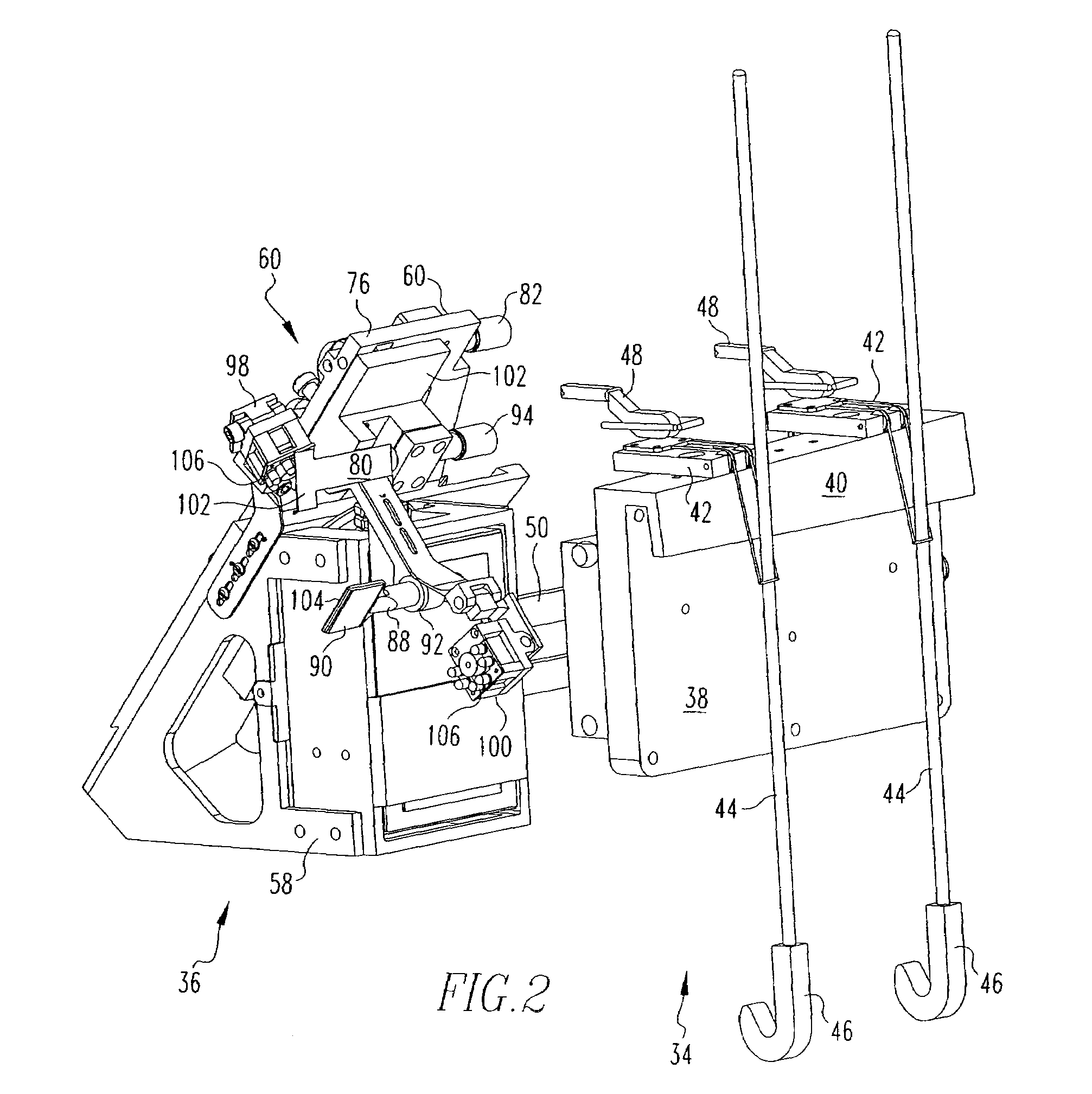Inspection carriage for turbine blades
a turbine blade and inspection carriage technology, applied in the direction of vibration measurement in solids, instruments, material magnetic variables, etc., can solve the problems of difficult inspection of these regions, inability to detect contact stresses and cracks in these regions, and undesirable for individuals to remain in this region for extended periods
- Summary
- Abstract
- Description
- Claims
- Application Information
AI Technical Summary
Benefits of technology
Problems solved by technology
Method used
Image
Examples
Embodiment Construction
[0038]The present invention provides an inspection carriage for remotely inspecting the Z-shroud and snubber regions of turbine blades while the turbine blades remain within the turbine. Referring to FIG. 1, the L-0 row of turbine blades 10 includes individual blades 12, with each blade having a leading edge 13, trailing edge 15, center section 14 and an outside edge 16. The center section 14 of each blade 12 includes an upper cylindrical standoff 18 and a lower cylindrical standoff 20. The upper and lower standoff cylindrical standoff 18, 20 of adjacent blades 12 define a snubber region 22 therebetween. Likewise, the edge 16 includes an upper end 24 and a lower end 26. The upper and lower ends 24, 26 of adjacent blades 12 define a Z-shroud region therebetween. When the turbine is in use, the adjacent upper and lower standoff cylinders 18, 20, and adjacent upper and lower ends 24, 26 of adjacent edges 16, may rub against each other as the blades bend and twist. This contact can resu...
PUM
| Property | Measurement | Unit |
|---|---|---|
| of rotation | aaaaa | aaaaa |
| rotation | aaaaa | aaaaa |
| skew angle | aaaaa | aaaaa |
Abstract
Description
Claims
Application Information
 Login to View More
Login to View More - R&D
- Intellectual Property
- Life Sciences
- Materials
- Tech Scout
- Unparalleled Data Quality
- Higher Quality Content
- 60% Fewer Hallucinations
Browse by: Latest US Patents, China's latest patents, Technical Efficacy Thesaurus, Application Domain, Technology Topic, Popular Technical Reports.
© 2025 PatSnap. All rights reserved.Legal|Privacy policy|Modern Slavery Act Transparency Statement|Sitemap|About US| Contact US: help@patsnap.com



